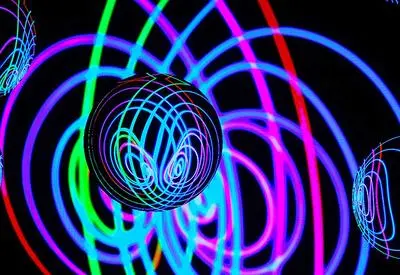Infinity is back. Or rather, it never (ever, ever…) went away. While mathematicians have a good sense of the infinite as a concept, cosmologists and physicists are finding it much more difficult to make sense of the infinite in nature, writes Peter Cameron.
Each of us has to face a moment, often fairly early in our life, when we realize that a loved one, formerly a fixture in our life, was not infinite, but has left us, and that someday we too will have to leave this place.
This experience, probably as much as the experience of looking at the stars and wondering how far they go on, shapes our views of infinity. And we urgently want answers to our questions. This has been so since the time, two and a half millennia ago, when Malunkyaputta put his doubts to the Buddha and demanded answers: among them he wanted to know if the world is finite or infinite, and if it is eternal or not.
Recently we have heard again John Donne's words promising us that eternity consists of
"no noise nor silence, but one equal music;
no ends or beginnings, but one equal eternity."
Hard to imagine, and surely one equal music would soon become intolerable!
There are many approaches to infinity through the twin pillars of science and religion, but I will just restrict my attention here to the views of mathematicians and physicists.
Aristotle was one of the most influential Greek philosophers. He believed that we could consider "potential infinity" (we can count objects without knowing how many more are coming) but that a "completed infinity" is taboo. For mathematicians, infinity was off-limits for two millennia after Aristotle's ban. Galileo tried to tackle the problem, noting that an infinite set could be matched up with a part of itself, but in the end drew back. It was left to Cantor in the nineteenth century to show us the way to think about infinity, which is accepted by most mathematicians now. There are infinitely many counting numbers; any number you write down is a negligible step along the way to infinity. So Cantor's idea was to imagine we have a package containing all these numbers; put a label on it saying "The natural numbers", and treat the package as a single entity. If you want to study individual numbers, you can break open the package and take them out to look at them. Now you can take any collection of these packages, and bundle them up to form another single entity. Thus, set theory is born. Cantor investigated ways of measuring these sets, and today set theory is the commonest foundation for mathematics, though other foundations have been proposed.
___
If you toss a coin 100 times, it is not impossible (just very unlikely) that it will come down tails each time. But, if you could imagine tossing a coin infinitely often, then the chance of not getting heads and tails equally often is zero
___
One of Cantor's discoveries is that there is no largest infinite set: given any set you can always find a larger one. The smallest infinite set is the set of natural numbers. What comes next is a puzzle which can't be resolved at present. It may be the real (decimal) numbers, or maybe not. Our current foundations are not strong enough, and building larger telescopes will not help with this question. Perhaps in the future we will adopt new foundations for mathematics which will resolve the question. But for now, since mathematics is a mental construction, we can decide whether the universe we are playing in satisfies the "continuum hypothesis" or not.
These questions keep set theorists awake at night; but most mathematicians work near the bottom of this dizzying hierarchy, with small infinities. For example, Euclid proved that the prime numbers "go on for ever". (Aristotle would say, "Whatever prime you find, I can find a larger one"; Cantor would simply say "The set of prime numbers is infinite." Mathematicians (including this year's Fields Medallist James Maynard from Oxford) seem to be closing in on the Twin Primes Conjecture. Twin primes are pairs of prime numbers, such as 3 and 5, or 71 and 73, differing by just 2; the conjecture, unproved as yet, asserts that there are infinitely many of them. But these are the infinities of the natural numbers, the smallest infinity.
 SUGGESTED READING
Physics alone can't answer the big questions
By Sabine Hossenfelder
SUGGESTED READING
Physics alone can't answer the big questions
By Sabine Hossenfelder
While Kronecker (a fierce opponent of Cantor's ideas) thought in the nineteenth century that "God created the natural numbers; the rest is the work of man", we can now build the natural numbers using the tools of set theory, starting from nothing (more precisely the empty set).
Mathematicians know, however, that there is a huge gap between the finite and the infinite. If you toss a coin 100 times, it is not impossible (just very unlikely) that it will come down tails each time. But, if you could imagine tossing a coin infinitely often, then the chance of not getting heads and tails equally often is zero. Of course, you could never actually perform this experiment; but mathematics is a conceptual science, and we are happy to accept this statement on the basis of a rigorous proof.
Infinity in physics and cosmology has not been resolved so satisfactorily. The two great twentieth-century theories of physics, general relativity (the theory of the very large) and quantum mechanics (the theory of the very small) have resisted attempts to unite them. The one thing most physicists can agree on is that the universe came into being a finite time ago (about 13.7 billion years) -- large, but not infinite.
___
They deny that the infinitely small can exist in the universe, but prescribe a minimum possible scale, essentially the so-called Planck scale
___
The James Webb Space Telescope has just begun showing us unprecedented details in the universe. As well as nearby objects, it sees the furthest objects ever observed. Because light travels at a finite speed, these are also the oldest objects observed, having been formed close to the beginning of the Universe. The finite speed of light also puts limits on what we can see; if an object is so far away that its light could not reach us if it travelled for the whole age of the universe, then we are unaware of its existence. So Malunkyaputta's question about whether the universe is finite or infinite is moot. But is it eternal or not? That is a real question, and is so far undecided.
Attempts to reconcile relativity and quantum theory have been made. The ones currently most promising adopt a very radical attitude to infinity. They deny that the infinitely small can exist in the universe, but prescribe a minimum possible scale, essentially the so-called Planck scale.
Such a solution would put an end to Zeno's paradox. Zeno denied the possibility of motion, since to move from A to B you first have to move to a point C halfway to B, and before that to a point D halfway from A to C, and so on to infinity. If space is not infinitely divisible, then this infinite regress cannot occur. (This solution was already grasped by Democritus and the early Greek atomists.)
Of course, this leaves us with a conceptual problem similar to the one raised by the possibility that the university is finite. In that case, the obvious question is "If the universe has an edge, what is beyond it?" In the case of the Planck length, the question would be "Given any length, however small, why can't I just take half of it?"
Perhaps because we have been conditioned by Zeno's paradox, we tend to think of the points on a line to be, like the real numbers, infinitely divisible: between any two we can find another. But current thinking is that the universe is not built this way.
___
Time, however, remains a problem
___
More important to physics, the atomist hypothesis also gets rid of another annoying occurrence of infinity in physics. Black holes in general relativity are points of spacetime where the density of matter becomes infinite and the laws of physics break down. These have been a thorn in the flesh of cosmologists since their existence was first predicted, since by definition we cannot understand what happens there. If space is discrete, we cannot put infinitely many things infinitely close together, and the paradox is avoided. We can still have extremely high density; the black hole recently observed and photographed at the centre of our own galaxy is (on this theory) just a point of such high density that light cannot escape, but does not defy our ability to understand it.
Time, however, remains a problem; current theories cannot decide the ultimate fate of the universe. Does it end with heat death, a cold dark universe where nothing happens? Does the mysterious "dark energy" become so strong that it rips the universe to shreds? Or does the expansion from the Big Bang go into reverse, so that the universe ends in a Big Crunch?
 SUGGESTED READING
The hidden logic behind emotions
By Juan R. Loaiza
SUGGESTED READING
The hidden logic behind emotions
By Juan R. Loaiza
Physicists in the 19th century developing the science of thermodynamics observed that, as time passes, a complicated system like the universe becomes more disordered. (We say that its entropy increases.) It has recently been suggested that this is upside down; it is the increasing disorder of the universe which in some way causes time to pass. This is part of a movement in which the traditional units of space, time, matter and energy are replaced by information as the fundamental currency of the universe. But these are early days for such theories.
None of this matters to us individually. The sun will expand and swallow the earth long before the universe reaches its end. But we have an insatiable curiosity to know the answer to Malunkyaputta's question. As the mathematician (and optimist) David Hilbert said, "Wir müssen wissen, Wir werden wissen" (We must know; we shall know.)
References
Apostolos Doxiadis, Logicomix, Bloomsbury, 2009.
Carlo Rovelli, Reality is not what it seems, Riverside Books, 2017.



















Join the conversation